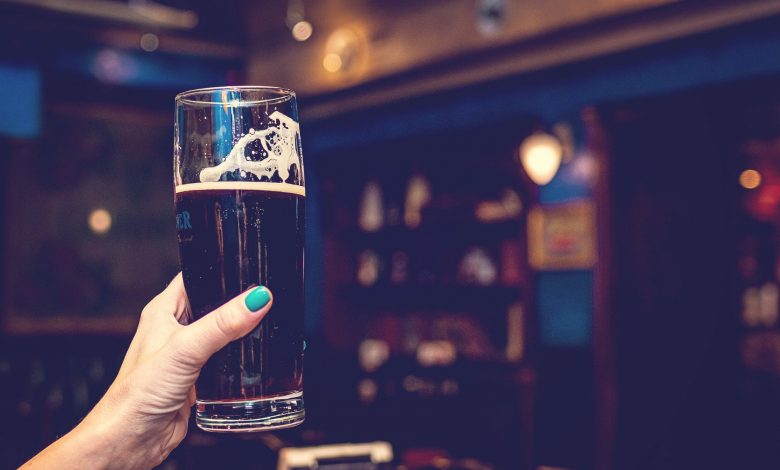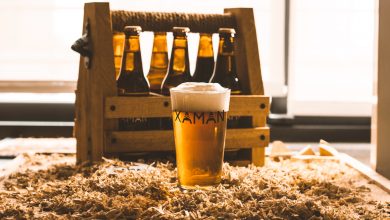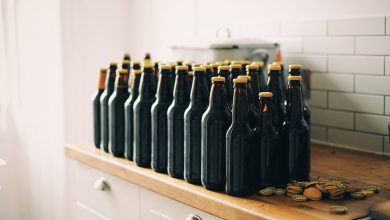Saison & Farmhouse Ale: The Richness Of Craft Beer

Similarly as with any meal or drink, trying to characterize craft beer is exceptionally abstract, yet one thing that is true, without a doubt, is that craft beer is colossally well-known in the US. Indeed, as indicated by the American Brewers Association, it is a section that makes up about 98% of all beers within the States.
With more than 150 sorts and in excess of 20,000 brands to browse, beer tasting can turn into an engrossing pastime giving a focus to weekends and occasions or a valid justification to look out for brew pairing nights at neighborhood eateries. Craft beer in the US has commonly gone back to the 1970s with the 1976 production of the New Albion Brewery in Sonoma, California. Despite the fact that this brewery just endured a couple of brief years, now, it stimulates an enormous marvel.
Why Pick Craft Brew?
- They basically taste better. Beer makers put their efforts into their brewing the beers. They utilize the finest quality ingredients and concentrate completely on the taste of each batch.
- They contain a higher liquor content compared to mass-created items, extending from 5 – 40% liquor by volume.
- They pair amazingly well with delicious meals, whether it is a basic lager and cheese parties, or tasting experiences in the most popular eateries.
Now, when we talk about craft beers, Saison and Farmhouse Ale are the names you are going to listen to. Why? Continue to read further to know more.

Farmhouse Ale vs. Saison
Basically, farmhouse beer and Saison allude to a similar style of beer that goes back to the nineteenth century.
Farmhouse beers got their title truly from the way that they were blended in farmhouses. When agribusiness required huge measures of labor, ranchers would blend clusters of lager in the off-season, prepared to serve to laborers in the hot months of the year.
It was not crafted for resale, and therefore, was constantly prepared in the horticultural off-season, consequently the French expression Saison, “season.” In summary, Saison and farmhouse ales are fundamentally the equivalent.
History of Saison
This craft beer’s history is exhibited in its style. “Saison” signifies season in French and addresses its fond association with the seasons. Bière de Saison (lager of the season) was initially crafted in the 1700s in Wallonia, the French side of Belgium.
Customarily, this was a home-crafted farmhouse ale with just a couple of encompassing qualities.
Crafted in the colder season and enabled to ferment in the winter, Saisons were a significant backbone for both the breeder and his occasional summer laborers.
The seasonality attached to crafting this style made its couple of amusing attributes. These brews were intended to be “set down” until the sunny developing season, so they must be sufficiently strong to weather a storing time of a few months and yet not so strong that cattleman couldn’t keep working subsequent to smothering their cravings.
They were unstrained, bottle molded, and quite vigorously hopped due to these equivalent long stockpiling times. Likewise, it was very dry on the grounds that any leftover sugars would have diminished the lager’s strength during the sweltering summer months when it was generally required. Apart from these couple of connecting factors, Saison’s are fully open to understanding.
A significant number of the early breeder brewers likely fermented with just things accessible on the field; hence, there would have been observable variety.
Old fermenting practices inducted the opportunities to plausible contamination by wild yeasts providing a significant number of these brews a somewhat “wild” edge. In some cases, flavors or other “growables” were tossed in the pot and the ranges of yeast – their blend with wild strains and shifting evaporating temperatures – could make a fairly enormous Saisonesque fermenting sense of taste.
Appearance of Saison
Saisons are regularly light orange, however, they can be anywhere from a pale golden into a darker golden or orange. A major, rough, and the enduring head is normal, which makes famous “Belgian lace” as it drips and fades. Precision is generally poor in view of the absence of filtering. The drifting mist is normal, and the brew is very bubbly.
Fragrance of Saison
Malt type is sparse to nonexistent. Rather the nose will be commanded by fruity astors, frequently citrus, such as orange or lemon. There will also be little herbs, flavor, or liquor fragrance present and just a low to mild hop. In the event that hot fragrances can be found, they will originate from flavors included or the spicy phenols of the Belgian yeast. Likewise, the hops may proffer a low peppery or floral tone.
The low to mild aridity or causticity is probably going to be present in the brew. All these unpretentious notes – the zest, sharp, and hop aromas, as a rule, are enhanced with the brew’s quality. Alcohol stays moderate, seeming peppery, and not hot at all. There ought to be positively no diacetyl.
Palatability of Saison
Palatability will be light to moderate with a zest expedited by high carbonating and a bubbly signature. A sharp character is normal, yet ought not to cause crumpling, rather stay as a low reviving sensation over the sense of taste. Liquor can be moderate to medium-high, yet warming ought to be moderately low.
Taste of Saison
A mix of fruity and spicy flavors will be the principal players. Delicate malt characters, liquor presence, and aridity will paint the foundation. Fruits, as in the nozzle, regularly comes through as a type of citrus. Flavors might be included, which can build in general unpredictability of the taste, yet ought not to overwhelm. Yeast is a significant player in making a zesty character, and these spicy phenolics can be available rather than or alongside different flavors. These phenolics will supplement any hop sourness; however, they are lower in depth compared to different Belgian lagers.
Hop character can go from low to mild, adding gritty and zesty notes to the entirety. Hop sourness ought not to overpower different characters, despite the fact that it tends to be of mild to high depth. As the quality of a Saison expands, sweetness will in general dro,; and flavors, hops, and bitterness will turn out to be progressively evident. Amazingly, high attenuation, alongside high carbonating, and the utilization of mild sulfate-rich water meet up to make a dry finish and sour peppery flavor. Sourness is frequently observed at a more significant level compared to the IBU rating.

How to Brew the Perfect Saison Recipe
In case, you’re keen on blending your very own Saison at your place, here are a couple of things you must know before getting started onto it.
- Water: Hard water is commonly used in Wallonia and highlights the drying aftertaste and sourness. In the event that you don’t currently have hard water, then you can put gypsum to your fermenting water to reproduce the water of the roots of this style.
- Yeast: Fermenting a Saison is all about yeast. The yeast gives the brew quite a bit of its hot, tart, and earthy farmhouse essence. This being the case, frequently yeasts are mixed in Saisons, so it is conceivable to blend the yeast having 65–75% of attenuation. Utilizing a mix of yeasts or utilizing various yeasts at various points in the maturation gives you the choice of making something really exceptional.
- The Grain Bills: The grain bills for a Saison recipe can change broadly. You can utilize just one Pils ale, a mix of pilsner ales from various sources, or blend in some different ales to assemble intricacy and color. Crystal ale can be mixed to make a darkened Saison, Vienna and additionally Munich ales can offer more complexity to the taste, and even wheat ale is now and then utilized. Whichever, assuming any, you choose to include, this ought not to make up about 15 percent of the grain bills.
- Essence: For those individuals who are not fans of all grain crafting yet, you can utilize a Pils fluid essence and soak a little pack of specialty grains to add more color and intricacy, or include a modest quantity of a darker ale essence to obscure the color.
- Tartness: To include acidity, fermented ale can be put on the grain bills. Lactobacillus can likewise be mixed along with your yeast to produce acrid notes.
- Supplements: Including supplements, for example, Belgian Candi sugar, nectar, or also a syrup, can include fascinating tastes and more liquor without expanding the body weight. These ought to be added into a similar 5 to 15 percent of any extra grains.
- The Mash: The Saison’s body is normally light to mediocre, making it fundamental for all-grain brewers. Utilize a one-step mash, to remain at the low edge of the mashing temperature extent, between 146 up to 150 degrees Fahrenheit. This will expand the division of convoluted sugars to more uncomplicated sugars by beta-amylase, delivering a profoundly lessened brew.
- Hops: For originality, opt for Noble hop assortments – for example, Tettnanger, Northern Brewer, East Kent Goldings, or Styrian. On the off chance that you need to dry hop… Just do it.
How to Serve the Saison
Saisons must be served in a goblet or tulip crystal glass at 45 – 50 degrees Fahrenheit.
Likewise, seasonings are frequently added to more powerful Saisons. We would recommend preparing your first sample without seasonings, yet if you have the tingle to include something, coriander and orange peels are acceptable decisions.

What to Eat with Saison
Saison is the ideal decision. Its roots being a farmhouse lager, generally prepared with the ingredients that were readily available on the ranch, which makes it a famously troublesome style to nail down. Saisons may be dark, golden, or almost white. A few are solid, while some are most certainly not. In excess, a couple have the tangy touch of added flavors, organic products, or even wild yeast. Its range is tremendous, yet most present-day Saisons show a couple of distinct attributes. They are generally dry and overly bubbly. Sourness is genuinely high. Articulated fiery hop flavors go better with the peppery zest and fruits of Belgian along with the French yeast strains. Additionally, they are amazingly reviving.
Those components assist in making Saison particularly appropriate to match with food. They’re sufficient to take on full-spiced dishes, yet are still mild enough for a spicy day. The amusing mix of yeasty foods and spices complement a wide scope of dishes from fiery Asian and Middle-Eastern to broiled red meat. Also, the high bubble factor and intense tartness make them a great sense of taste cleansers. Be that as it may, a single word of alert: don’t go excessively light with the foods or this lager will overwhelm it.
- Farmhouse foods: Natural brews call for rural food, and French common cuisine is an incredible decision to go with a farmhouse ale. A basic broiled chicken with roasted garlic and some herbs complement the best with an accommodating table and cold Saison. At simply 3.5% liquor, it truly is light in weight. It won’t hinder the dish. Verdant and flowery flavors lock into the herbs within the dish.
- Bouillabaisse: This along with Saison is another enthusiastically suggested matchup. From shellfishes to fennels to saffrons, the tastes of this great French stew discover consonant union with Saison. Spicy yeast and hot/flower hops work with the meal’s more flavorful side, while some hints of citrus along with the stone fruits get the orange pizzazz that adds flavor to the soup.
- Mixed Greens: While wine is famously hard to combine with servings of mixed greens, such as salads, due to the vinegar in them, Saison experiences no such difficulty. Attempt a chilled glass of Saison with a plate of mixed greens of mesclun and arugula. The lager is smooth enough that it won’t overwhelm the serving of mixed greens, and the yeast-determined zest pleasantly goes perfectly well with the spicy greens.
- Jazzy Fromage: Saisons are delectable with smooth, bloomy-skin cheeses. The delicate Saison, yet at the same time, full-spiced brew, blends well with this tender mellowed goat cheese. Hot, fruity, and hearty flavors in the lager lock on to the herbaceous, gritty tang of the cheddar. Also, Saison is sufficiently bubbly to handle the gooey cheese and melt your sense of taste as you go.
- Say Yes to Spices: The hot side of the Saison makes it an extraordinary accomplice for sweet-smelling Asian or Middle-Eastern luscious meals. The spicy and juicy yeast essence alongside flavors that are some of the time included in these lagers gives both balance and complexity to these foods. Take the lovely Saison with pad thai dish. Lemongrass, clove, and ginger in the brew give an additional layer of extra flavors to the match-up. Try not to be reluctant to add some bean stew paste to this dish. The flavors merge wonderfully with the yeast, and the bubblings will clean away any persisting warmth and oil. Middle Eastern meals are based on a complex mix of flavors like nectar, mint, cumin seeds, and coriander. The hot/sweet/fruity forms of Saison sit amazingly well and light up shawarma with healthy hummus and a little tahini. Fiery cumin and spiced notes in the brews tie in splendidly with comparable flavors within the dish. Zest of nectar and organic products, such as apricots plus pears, provide a sweet differentiation.
- Tender and Juicy Meat: In spite of the fact that it’s light and reviving, Saison is sufficiently meaty to go well with broiled red meat. Take Saison with a cracked-pepper crusted steak. It is all about the herb in this combination. The spicy notes of the Saison yeast make an additional zest from rye ale in the meal.
- Charcuterie: You can’t turn out badly when matching Saison with the yummy charcuterie. Saison has an equalization of flavor and fruits with hidden nectar sweetness that will supplement a wide scope of smoked, confited, and cured meats. The bubbliness will scour your sense of taste clean.

Why Opt for Saison?
Because it tastes better! As simple as that…
The number one purpose behind why you need to drink Saison and farmhouse ale is on the grounds that Saison brew tastes far superior to mass-produced options. Saison lager savors much better since Saison brewers invest their energy centering the nature of their brew as opposed to concentrating on their marketing. They put their efforts, just as, heaps of stunning ingredients into each brew they mix and don’t compromise on it. Pick taste. Pick your Saison brew!
Here are a few more reasons why you should choose Saison.
- It has more alcohol: Saison lagers come in distinct forms and sizes, yet one thing continues as before – they all are filled with a powerful punch! Most Saison brews extend from 3.5% alcohol by volume; however, some Saison lagers can reach up to 5 to 8% alcohol by volume!
- No need to stroll in the washroom: At the point when you take Saison, you won’t need to run to the restroom every 15 mins since you won’t take the same number of brews. Along these lines, your bladder will not be flooding, and you will not spend most of your evening strolling to and fro from the washroom. Nobody needs to do this. No one at all! Assuming, notwithstanding, you are taking more grounded, full-seasoned Saison, there is no compelling reason to drink a great many Saisons.
- Packed with lots of healthy benefits: That is true! Saison has various health advantages. Research has indicated that craft lager has more advantages compared to red wine! Craft brew includes a bigger number of supplements than wines. Craft lager likewise comprises some dissolvable fiber, some B nutrients (quite a folate), and a scope of antioxidants. They are additionally the most extravagant sources of silicon, since silicon in the eating routine assists in defending against osteoporosis. The antioxidant ferulic corrosive is taken out from lager, and then, into the body (more effectively compared to the tomato).
- Saison is a perfect choice for the best times: Whilst drinking Saison lager, you will definitely have some incredible occasions to spend with your loved ones who love taking Saison brewed with you. Give it a shot! Go out and have fun with your loved ones and make sure to make it a point that everybody needs to attempt a Saison. Have everybody talk about their experiences of the Saison – scents, flavors, likes, loathes, and so on. Focus on the discourses that emerge because of this amazing brew that you enjoy. It is astounding! Envision doing this fun activity with your loved ones once in a while, and it could transform into a holding occasion that you and your brew drinking mates anxiously wait for each end of the week!
- Saison and delicious food complement each other: As we mentioned earlier, matching up the Saison brew with fine foods is becoming a gigantically mainstream pattern in the food business. One could even contend that Saison or craft lager is getting more mainstream compared to wine as the beverage of choice whilst top-notch food. Have you ever come to know about a brew and cheese party? No? Well, it is a perfect time to do that, and don’t forget to take Saison along. You will surely have the time of your life.
Conclusively, life is short! Keep drinking Saison & Farmhouse ale.
Craftsman brews like the Saison are beginning to return into fashion, and on the off chance that you’re searching for something that goes well with practically any supper, at that point, get possession of some Saison!
Regardless of whether you by and by lean toward a lot more grounded lagers, you will be charmingly amazed at how much flavor Saison has. However, there is one thing that will happen for sure. When you place an order for Saison and Farmhouse ale, you better get prepared for anything because you just never know what you are going to get, but surely, you will only get the positive zest.



